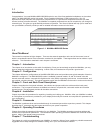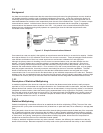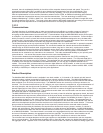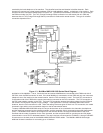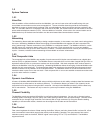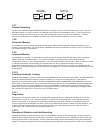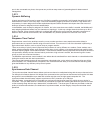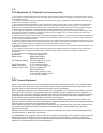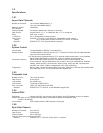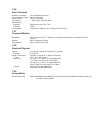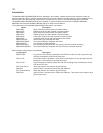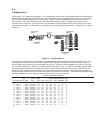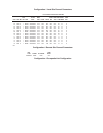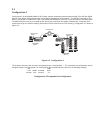port is also connected to a printer, the reports can provide an easy means of generating data for better network
management.
1.5.13
Dynamic Buffering
A basic requirement of all muxes is some sort of buffering capability to temporarily hold channel data while it is being
assembled into a block. In the early days, a mux was sometimes judged by the size of its buffers. Large buffers are
unnecessary in newer designs that include sophisticated dynamic buffer allocation techniques where the amount of
buffer per channel is assigned on an as-needed basis.
In the MultiMux, each channel is assigned 1K of buffer, but in the case where more buffer is needed, the MultiMux will
start assigning additional buffers from the channels not requiring it. In this way a single channel can have up to 8K of
buffer if required. When dynamic buffering is combined with efficient flow control and the automatic transmission of
data from each channel at set intervals, as in the MultiMux, very smooth operation for each user is the result.
1.5.14
Response Time Control
Response time control is the technique used by a mux to make sure that no user experiences undue delays in
performance due to a specific channel using too much link time. This can occur if one of the channels is performing a
high volume batch function, such as a print dump or program transfer.
There are a variety of priority control (response time) schemes in use by different mux vendors. Some vendors use a
switch selection approach where each channel can be given a high, medium or low setting with the low used for those
channels requiring higher volume batch transfers. There are also software-sensing response time techniques where the
microprocessor actually monitors channel activity, and when a high volume is sensed, that channel is given a lower
priority so it will not crowd out the others.
The MultiMux response time control method is one where data is transferred from each channel on a timed basis while
limiting the amount sent with each transmission.
This insures that interactive users will not experience undue delays but, on the other hand, batch activity can still be
accommodated. This, combined with a Response Time command and the ability to shut off channels not being used,
gives the MultiMux a very efficient priority control system.
1.5.15
Synchronous Data Channel
The synchronous data channel feature allows synchronous data to be multiplexed along with the async data and voice.
For example, this feature allows a LAN bridge to be connected to the synchronous data channel and transfer LAN data
along with the normal MultiMux async data and voice/fax services over the high speed composite link. The
synchronous data channel feature supports synchronous HDLC protocols up to 128K bps.
With this feature, composite link B is converted to a synchronous data channel (port B) to which the sync device is
connected. The sync data channel is controlled by commands for speed and clocking that allow the synchronous data
to flow smoothly along with the async data and the voice/fax traffic. The three types of data are prioritized so that the
quality of voice/fax transmissions, the timeliness of synchronous data, and the integrity of asynchronous data are all
preserved.



